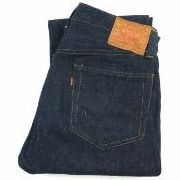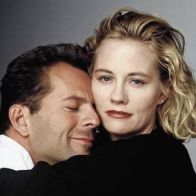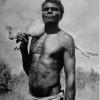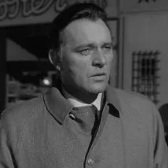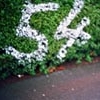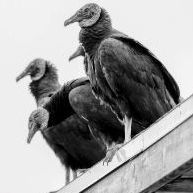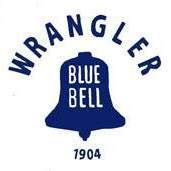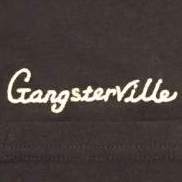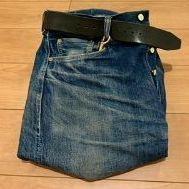Leaderboard
Popular Content
Showing content with the highest reputation on 03/12/25 in all areas
-
22 points
-
20 points
-
17 points
-
16 points
-
12 points
-
10 points
-
Best thing to start off with is the patent of the hidden rivet and the man behind it, this eliminates alot of myths. For example (pinched straight from the interweb) - the dates of patent application (7/7/'34) and patent application being granted (30/4/'35) show a time well before the red tab was attached to the (now) plain back pockets. This eliminates the idea of an exposed rivet model with a tab but opens the door to a possible non-tabbed late 1935/earlier 1936 model? ( Don't worry, one hasn't surfaced yet but They are probably listening). Still, plenty of time to see the experimental hidden rivet model in different guises although the only examples l have apart from the 501XXC-branded hidden rivet model could be customer requests (remember the dude ranches started springing up around 1934) but here they are anyway - Firstly, hidden rivet model with machine pressed suspender buttons. These are not the press on types available to customers as a separate attachment. I have seen two examples of this model. This #11 from the 501XX book. Secondly, hidden rivet model with under-tucked/stitched back centre belt loop. This was a feature on the previous, exposed back pocket rivet 501 model around 1934/35 which ties it in as a possible short experimental model. I have only seen two sets of images of this model, both owned by the Berberjin guy. Detail - If anything it shows that there were a constant flow of ideas coming in to make improvements to the 501XX at the time, alot of this was down to one man - Milton Grunbaum, most famous for the invention of the Concealed copper rivet. Milton Grunbaum worked his way up through the ranks at LS &Co to become the factory manager around 1922 and was the creative mind behind alot of proposed and implemented modifications to the structure and strength of the 501XX, for example one of the first improvements was to eliminate the linen thread which was prone to rot, so cotton thread was substituted. His idea of setting up of the modern production line within the factory revolutionised productivity. Improving rivets from the old school tooled head type to the more modern round headed type we're used to now. He was probably responsible for the chainstitched waistband and decisions behind the branding of buttons c.1927. Probably also had a role in the idea behind the pop-on suspender buttons c.1937 and the yoke construction c.1941. All this suggests constant tweaks, constant changes, some subtle, some not so. Obviously the two major changes for most were the Red tab and the hidden rivets. The red tab was soley advertised, briefly, by way of a painted wooden cowboy torso with a pair of 60" inseam 501's nailed to it before the patent 1999927A for Levis hidden rivets was on the top of the first pocket flasher attached to the back pocket of the '1937 model' 501XX. So in conclusion (in my mind at least) there are 4 types of 1937 model and one anomaly. I will make my post about it next.9 points
-
I was reading recently that Gardener were made by Evisu (what we previously suspected) using Evisu denim.. which is why we see the Take5 4 jeans collabs.. (Gardener, Dry Bones, Pherrows, Stormy Blue and such..) but what i didn't know was.. at that time (mid-late 90s) the Evisu factory supervisor's name was Ueki, hence the name on the tab.. it's just a happy accident that it reads Levi's when partially concealed by the pocket..6 points
-
The 1937 501XX models. 1. 1935- early 1937 (?) 501XXC prototype model Pre-pocket flasher model with leather patch probably reading 501XXC (the C standing for covered or concealed?) Copper rivets throughout, with flat bottomed concealed back pocket rivets. From September 1936 onwards the 501 used the smaller 1st issue red tab (12mm as opposed to the normal 15/16mm) placed high on the back pocket. Copper riveted on leather patch. 10oz denim. Mix of orange and yellow stitching. Buckle is either silver colour or two tone copper plated/silver. No images available. 2. 1937 501XX (1937-41 model) First pocket flasher model (dated 1937) informing customers about the new "concealed copper rivets". Larger 15/16mm red tab, cleaner construction throughout. Mostly orange stitching, buckle is usually two tone copper plated/silver. This is the most common model, produced for around 3 or 4 years. 3. 1941 501XX (1941-1942 model) Reverse yoke model where the left and right top panels (yoke) are overlapping the left and right bottom (leg) panels. Still comes with 1937 dated pocket flasher and copper used in all rivets. Mostly orange stitching apart from the chainstitched waistband where black thread is sometimes used. The concealed rivets are rounded copper type, different than its predecessor. Both types of buckle used during this period but on occasion a black painted buckle has been used.This model is less common than the 1937 model. 4. 1942 501XX (April-August 1942) New 1942 dated pocket flasher stating "concealed pocket rivets", New 12oz(?) denim, yoke reversed back to pre-1941 construction, mix of orange and yellow stitching, Black anodized buckle briefly used during this short period although one example found looks to have a silver one. Back pocket concealed rivets are now a rounded shape and use copper coated iron, the others are still pure copper until August 1942 when all WPB's were implemented for the S501XX model. This model is the rarest of the main three types commonly found. The Anomaly: I have seen quite a few pairs of 501XX from the period 1935-1942 which have constantly contradicted the notion that the left over right back leg panels construction change came in around 1941. I have seen pairs with 1941 and 1937 details but the construction is still left over right. Hope all my ramblings make sense?6 points
-
A few things, kinda in between size 34 and 36 in warehouse and some freewheelers. Preferring looser fit or oversized lately. All I’ve worn lately is sugar cane 1947 or full count 0105ss. Both way more comfortable than any warehouse I’ve ever had. In general I’m just sick of buying and hoarding and collecting. Still have probably more than I can ever wear. Will continue to get rid of stuff over the next few months when I have time to go through it.6 points
-
6 points
-
5 points
-
5 points
-
I have quite a few pairs of Warehouse and Freewheelers, size 34 waist. Most of it new with tags and 0.99 starting bid. https://www.ebay.com/sch/i.html?sid=theblankenships1&_pgn=1&isRefine=true&_trksid=p4429486.m3561.l494965 points
-
5 points
-
SInce there are plenty of models available (or were at one point) and we already have some discussions in various threads, I thought, it would be fun to have a dedicated thread to the 30s cinch back models to share fit pics, fades and the different models of the various makers. According to TCB it is differentiated roughly between the early, mid and late 1937 models. These are the main difference of the models as our resident scholar on this matter Dr Heech had written before here: "Lvc 1937 at the bottom, Csf 1941 in the middle and FW42's at the top. Both the repro 37 and 42 models have the standard yoke set up, whereas the pair in the middle do not. The standard yoke set up is what we are used to seeing on 501's made from August 1942 up until the present day which sees the bottom panels overlap the top ones, like on the lvc 37's and FW42's shown." So the yoke: 1937- right over left 1941- top over bottom 1942- back to standard from then on bottom over top and left over right. Some issues of the last years: TCB 30s Jeans C Vintage pair of Mr Koizumi from TCB site: Freewheelers Lot.601 XXC 1937 WAREHOUSE - HINOYA EXCLUSIVE - HINOYA 75th Anniversary Model - 1003HXX-DSB Freewheelers Lot 601 XX 1942 SUGAR CANE Super “Denim” Collectibles Lot No. SC49005 BLUE DENIM WAIST OVERALLS “1942” Cushman 22192 1937 MODEL4 points
-
Remember those^ RRR's of mine which i sold to @Thanks_M8 I thought i could swing a 31" but they were a bit too snug anywho.. there is a size 32" listed on Mercari for anyone interested https://zenmarket.jp/en/mercariproduct.aspx?itemCode=m68879704515 They're a fantastic old, rare as fk repro from 1998..3 points
-
3 points
-
3 points
-
Just spent an hour writing and my phone ran out of power. Gonna take a break. [Edit] lost it all, will start again later 😐3 points
-
3 points
-
3 points
-
So I was to'ing and fro'ing on whether to get a size 42 or a 44 in the Powerwear heavyweight sweatshirt (#2434007) I have FW jackets in size 44 and size 46, so logic says a size 44 in sweatshirts should be good However, for me, the sweatshirt measurements tend to look, or be, generous... though it depends how you want them to fit Also, I'd previously got the Lot #2334011 sweatshirt in size 44 without consulting anyone and it's anomalously massive, even after washing it at 90C and sing the dryer (yes, that's another story) Seiichiro had the idea of sending me both 42 and 44 to help me choose; and asked me to post the comparison (top service from Seiichiro, as always btw). I've never posted on IG so here we go on Sufu I know other Sufu'ers get more shrink from their wash/dry methods, so my measurements are a guide to be used with caution The pictures are pre-wash 42, pre-wash 44 and then washed 42 Anyhow, happy with the size 42 and it seems the right one for me in Freewheelers sweatshirts Size 42 pre-wash / raw Size 44 pre-wash / raw Measurements chart - measurements can vary depending who is taking them - main take-away here is the relative change Ta-da... settled on size 42 And then the bad prince got locked up in the dungeon... and they all lived happily ever after. The end3 points
-
3 points
-
3 points
-
Yep, had a pair, but I wouldn’t put the 39s in this thread - IMO it wasn’t an issue that FW wanted to make ‘period correct’ … but they did have the best arcs ever sewn onto a back pocket https://freewheelers.co.jp/blog/new-arrivals/lot-601-xx-″1939″/2 points
-
From the limited photos, it certainly looks very similar to the S1003XX in the photo above your post lol - but brown cotton. Celluloid also posted about it to their story. And posted a sneak peak of SS25 WH here: https://ameblo-jp.translate.goog/celluloidblog/entry-12889557127.html?_x_tr_sl=ja&_x_tr_tl=en&_x_tr_hl=en&_x_tr_pto=wapp2 points
-
First mention of a 30th anniversary product from Bears, a pair of jeans and jacket. Kinda wishing it was a bit more flashy such as a different patch, but will be interesting to see. https://www.instagram.com/p/DHHA1iQzCP0/ https://www.instagram.com/p/DHHBMwXzGHp/2 points
-
2 points
-
Well maybe tomorrow I'll do a little update on the 1936-1942 era 501XX which may help me get it all straight in my head too 😅2 points
-
2 points
-
I genuinely hope the postman crushes that when delivering it.2 points
-
I alluded to this listing in the Sugar Cane M-series thread but thought that it might make sense to add here too to keep the momentum going. A dead stock MFSC Lot 54 pair, tagged 32/34. Not the greatest deal ever but not bad either https://www.fromjapan.co.jp/japan/en/auction/yahoo/input/p1112672376/2 points
-
2 points
-
Dropped by my long-time favorite pub yesterday—Schmidt’s, in Albany, for anyone in the area—for a couple pints, plus a pizza (not pictured) from another favorite joint over on that side of town. Always a great feel to the place, which doubles as a tobacconist (or maybe it doubles as a pub). They keep fresh Old Speckled Hen on tap, my consistent go-to—but also usually have one or two good Belgians, often from my old favorite Quebecois brewery Unibroue. The pictured table is incidentally where I wrote a good chunk of my thesis, a couple of years ago now.2 points
-
2 points
-
2 points
-
2 points
-
2 points
-
2 points
-
2 points
-
2 points
-
2 points
-
1 point
-
1 point
-
1 point
-
1 point
-
1 point
-
I haven’t taken photos of pants, because I’m currently wearing 1/2 of them. I also haven’t taken photos of tees (2x), a whole big slew of socks, nor a variety of smaller things (shades, watch, mugs, gloves, kerchief, ???). With those exceptions out of the way, finally: jackets & coats. Shown first are the Type 961 Baste Pocket Jacket, in red ochre cotton velvet; the Type WS922 Welsh Flannel Curve Front Jacket (Thanks Austin!); the Type 425 Double Cuff Flat Jacket, in some sort of very soft (felted?) wool. Last but not least are the Tenth Anniversary Edition Type 900 and the standard Type 902.1 point




